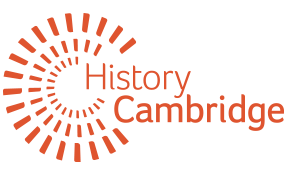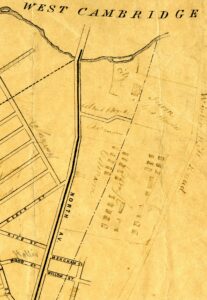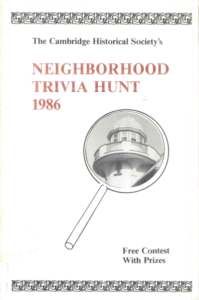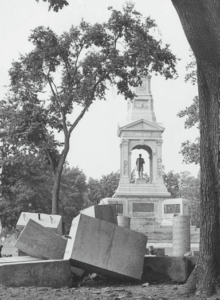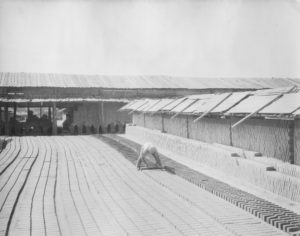
‘The corner of the city he calls home’: North Cambridge through the eyes of Charlie Sullivan
By Marieke Van Damme, 2024
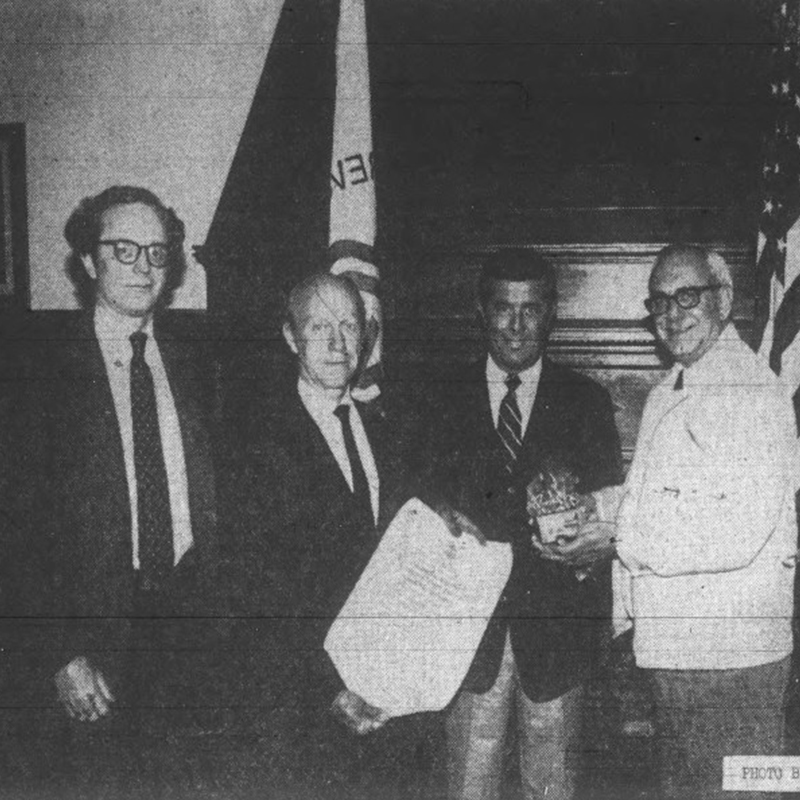
No matter what era you’re in, some things are universal – such as young people enjoying a good time. Where did North Cambridge teenagers go to party in the mid-1970s? Some went to a vacant, overgrown area near the train tracks just out of Porter Square, the site of a horrific fire that occurred around the time they were born. Their secluded hangout area at the end of Cogswell Avenue was the former site of Carstein Coal. The business, founded by Hans L. Carstein in 1884, was one of the first all-rail coal dealers in the area and was a North Cambridge business staple.
It was on this site on Easter Sunday, April 22, 1962, where a seven-alarm fire raged. The incredible blaze drew (by some accounts) an estimated 20,000 spectators who got in the way of the more than 300 firefighters from a dozen neighboring communities working together to contain the flames. The Cambridge Chronicle reported a fire official remarked, “If we had a stronger wind, we might have lost half of Cambridge.” Thankfully, no one died in the fire, but 22 homes were damaged or destroyed, 25 people were displaced and seven firefighters were injured. It was a significant event in the history of the neighborhood remembered by residents for the rest of their lives.
In the Summer 2014 edition of the Growing up in North Cambridgemagazine, Frank McCarthy recalls gathering with his friends at nearby Rindge Park after spending the morning with their families. They saw the fire break out and “spread rapidly.” McCarthy’s home was on nearby Walden Street, so he sped home to check in. Upon arrival he saw his father “feebly water down the roof with a garden hose.” The home survived despite the fact that “sparks and embers showered the entire neighborhood.”
Those incredible, memorable flames were gone in February 1978 when Charles Sullivan stood outside of a house down the street. The neighborhood was quiet then, buried under 4 feet of snow from another monumental event, the Blizzard of ’78.
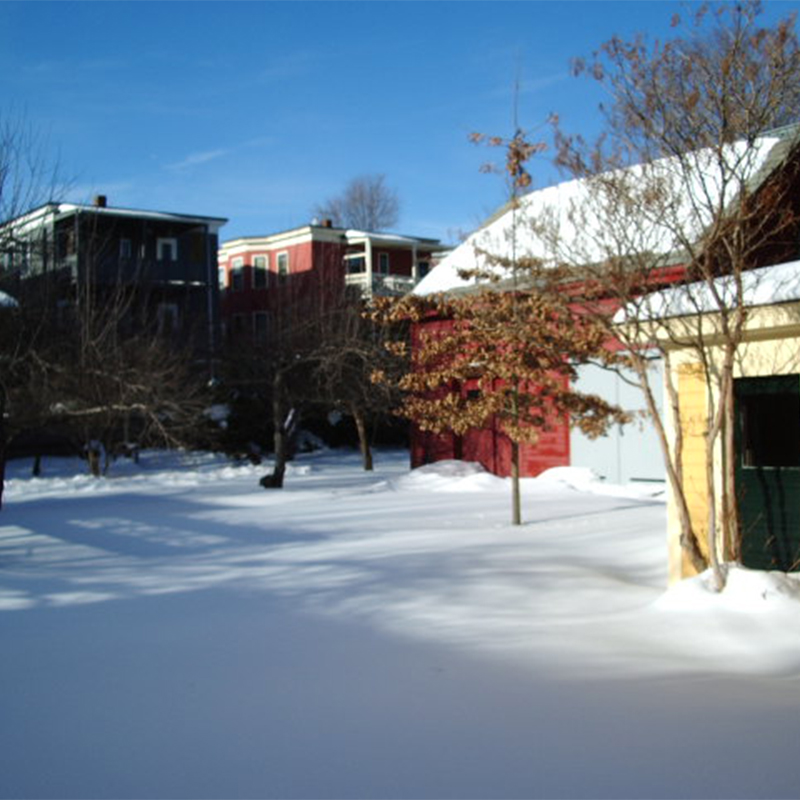
Charlie – the then-new-ish executive director of the Cambridge Historical Commission – was in North Cambridge looking for a place to live. After working at the commission for four years and talking with people who were renovating old houses, he decided it was time to take on a DIY project himself.
In the mid-1970s, the area was, as he describes it, “pretty ragged.” Being near the railroad meant trains, passenger and freight, would pass by frequently and shake the houses. On Friday nights, six-pack-lugging teenagers would process down the street to their party place. Occasional fires would break out and accidents would occur on the tracks. Yet despite the neighborhood challenges, Charlie bought the house and got to work. When spring melted the infamous blizzard’s snow, what he thought were snowdrifts in the backyard were actually a piano and an old chicken coop. Since the house hadn’t been lived in for five years, there were significant improvements needed, and the work filled “a succession of dumpsters in the driveway for a couple of years.” (As all homeowners know, house improvements are ongoing. Charlie says he was still completing various house projects during the Covid lockdown.)
As Charlie’s family grew, the character of the neighborhood took on a new importance. Luckily, his children grew up with many friends nearby, families they are still close friends with today. Fresh Pond was a fun destination for his family, although they had to skirt the area now known as Danehy Park rather than go through it since the former dump had not yet been developed (although it had, by this point, stopped burning).
North Cambridge has always been a tight-knit community with, as Charlie says, “a higher level of diversity than most people recognize.” After colonization, the area had Yankee farmers, then Irish brickyard workers replaced by French Canadian brickyard workers. Next in line were the upwardly mobile Irish families from East Cambridge who were then replaced by Italian and Black families. The closeness of the community was illustrated in the Cambridge Chronicle’s reporting on the 1962 Carstein Coal fire. The paper noted Our Lady of Pity School Hall was set up as a shelter space for the people displaced by the fire, “but that this proved to be unnecessary because neighbors and friends took fire victims into their own homes.”
Like all areas of Cambridge, this section of North Cambridge was evolving. The arrival of the red line subway’s Porter Square stop in the 1980s was a game changer for the area. Improved transportation access made the neighborhood more attractive to commuters and developers. The influx of new residents led to increased demand for housing, which in turn spurred development and gentrification.
While these changes brought opportunities to the neighborhood, they also had significant consequences. As Charlie noticed, “A lot of local families were cashing out and moving to Arlington, Medford or the Western suburbs.” The rising cost of living forced many longtime residents to relocate, altering the neighborhood’s social fabric. Indeed, the overgrown teenage hangout spot was eventually redeveloped into a residential community.
Despite these changes, Charlie says the buildings in the neighborhood have mostly stayed the same. Businesses have come and gone, though. While he appreciates the enduring legacy of Frank’s Steak House, he laments the loss of the woodworking store nearby on Massachusetts Avenue. He would never claim he is “from” North Cambridge (“my kids can say that”), but he truly appreciates the corner of the city he calls home.
A conversation with Charlie wouldn’t be complete without an obscure piece of historical trivia. Did you know there were once commercial pear orchards in North Cambridge? Many backyards still have remnants of this bygone enterprise, and street names such as Orchard Street harken back to the farms and fruit trees of North Cambridge’s past.
This article originally appeared in Cambridge Day.
